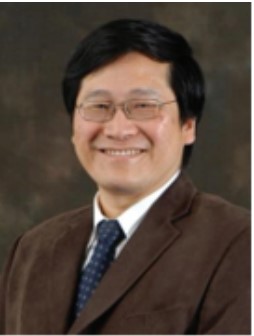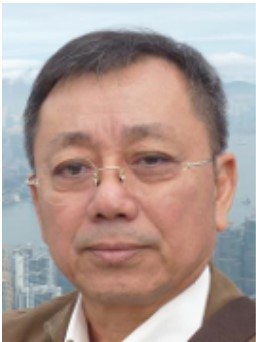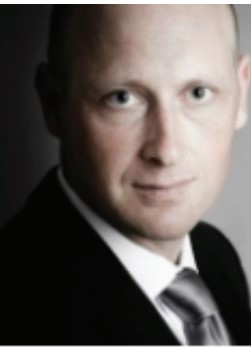
Connectivity provided by rail
transport in the country will have a significant impact on our social and
economic lives as an economical way of travelling inter-state but the
investments and infrastructures will lead to multiple parties of involvement
at various stages from inception to reality, including the education and
training of the relevant human resources to support this.
The
UTAR
Centre for Railway
Infrastructure and Engineering deems it is crucial for specialists,
researchers, academics and the industry to gather together on a
communicative platform to share and brainstorm ideas, identify the
challenges, obtain feedback from local and international experts and discuss
on various issues that impact education, training, railway construction,
design, engineering and supporting infrastructures.
With that in mind, the
2nd Symposium on
Railway Infrastructure and Engineering was held on 3 February 2021. It
was jointly organised by UTAR Centre for Railway Infrastructure and
Engineering (CRIE), Malaysia Rail Industry Corporation (MARIC) and Institute
of Materials, Malaysia (IMM). It aimed to bring together practitioners from
railway industries, owners, operators, researchers and academia to share
research outcomes and knowledge, and promote research activities to support
the new initiatives of expanding the rail network in Malaysia and promoting
railway connectivity within the ASEAN region.
.jpeg)
Datuk Seri Wee
during the opening ceremony of the symposium
The opening of the virtual
symposium was graced by Minister of Transport Datuk Seri Ir Dr Wee Ka Siong.
In his remarks, he said, “In Malaysia, the Government is embarking on this
new initiative and is expanding its rail network throughout the country.
Phase One of the MRT Sungai Buloh-Kajang Line, from Sungai Buloh to
Semantan, began its operations on 16 December 2016. The entire line, from
Sungai Buloh to Kajang, became operational on 17 July 2017. This is a
testament of the nation’s commitment to becoming a developed nation. This
51km track runs through 31 stations, serving a population of 1.2 million
people in the region. Realising the importance of a rail network especially
in the Greater KL area, the Government has further allocated funds for the
construction of the second MRT line which is under construction with a
distance of 52 km and an expected ridership of 529,000 commuters per day.”
He continued, “Another example of
the Government’s commitment on expanding the rail network in the country is
the construction of the East Coast Rail Link with a distance of 664km. The
construction cost is estimated at USD12.5billion connecting the East Coast
Economic Region states of Pahang, Terengganu and Kelantan. This will
potentially alter key international trade routes in the process. This
corridor is in-line with China’s Belt and Road ambition, connecting the
Middle East and Europe by sea routes. It is estimated that the ECRL will
transport around 5.4 million passengers and carry 53 million tonnes of cargo
annually by 2030, with a transportation ratio of 30% passengers and 70%
cargo. The spinoff of rail network expansion into education is expected to
carry the same momentum. With the expansion of rail networking and education
opportunities, it is timely for Universiti Tunku Abdul Rahman (UTAR) to
establish a research centre to promote interdisciplinary research in railway
infrastructure, engineering, socio-economics; to education, training and
services. This centre will work with other Malaysian government
organisations and railway operators to promote these activities.”
.jpg)
Prof Ewe expressed
that UTAR is committed to increase the interest and employment rate of
engineering graduates in the railway industry
UTAR President Ir Prof Dr Ewe Hong
Tat elaborated in his speech, “A symposium such as this, involving such a
wide area of specialities and with so many experienced and key professionals
in the field, both local and international will provide an avenue for more
in-depth discussions and generate ideas for further collaborative research
projects and activities. I hope this symposium will be a launchpad and a
great platform for all participants and speakers to exchange ideas,
brainstorm issues and challenges, and learn from the experts to seek
solutions and garner further support in various areas of interests and
initiatives related to the rail industry.”
Prof Ewe added, “Educational institutions and the industry play a great role in the training of graduates with the relevant knowledge and expertise to support the growth in the rail industry. To support the nation’s engineering needs for the rail industry, UTAR has taken steps to ensure that its graduates are given the relevant training, in addition to industry exposure, for an all-round education that promotes interdisciplinary studies and research in railway infrastructure, engineering and socio-economics as well as introducing an elective on Introduction to Railway Engineering and System Management in its Engineering degree curriculum and a new short course on Railway Electrification System to enhance our engineering graduates’ interests and employment in the rail industry.”
.jpg)
Prof Andy hopes the
symposium will be beneficial for the participants
The Symposium Chair-cum-CRIE Chairperson Prof Dr Andy Chit Tan noted that
the virtual symposium was a follow up of the successful inaugural symposium
held in January 2018 in conjunction with the setting-up of the CRIE. In his
speech, he also expressed his appreciation for all the support given by the
parties involved. “We are aware that the Malaysia government is embarking on
the extensive railway network in the country. In line with this, the
education sector plays a supporting role in railway research and training.
Among our research projects in UTAR is a collaboration with industry
partners on the development of composite rubber concrete railway sleeper,
and vibration mitigation using local rubber products to ensure integrating
safety of railway infrastructure and system,” Prof Andy Tan said, adding
that these were initial projects which will help the country support and
utilise its natural resources for sustainability.
“We also started our discussion on the development of rail site condition
monitoring and prediction of failure with our local train operator
Prasarana. This is another project that CRIE will be embarking in support of
local expertise and resources,” he added.
The symposium consisted of two sessions, providing a chance for the participants to exchange ideas and opportunities in the areas of railways infrastructures, safety and standards, operation safety, reliability and maintainability; social, environment and economic issues, education and training as well as transportation and optimisation of traffic control.
.jpg)
.jpg)
Datuk Dr Mohd
Yusoff Sulaiman (left) and Dato' Dr Ir Ts Mohd Abdul Karim delivering their
keynote address
Following the opening ceremony, the symposium continued with two excellent
keynote presentations; firstly, by President of Malaysia Rail Industry
Corporation Datuk Dr Mohd Yusoff Sulaiman with his topic “Capacity and
capability building” followed by President and Group CEO of Serba Dinamik
Group Berhad Dato' Dr Ir Ts Mohd Abdul Karim bin Abdullah with his topic
“Digital transformation in railway industry and technology”.
In Datuk Yusoff Sulaiman’s presentation, he spoke about understanding global
shifts that could shape the future of industrial development landscape of
future rail, drivers of change, key challenges faced by Malaysian Rail
Industry, developing goals and objectives for future rail, MARIC’s framework
as well as future rail agenda for Malaysia. He said, “We need to look at
initiatives and technologies that support but not limited to objectives of
creating resilient industries, increasing self-sufficiency and rethinking
business supply chains so we can be prepared for the future.”
Dato’ Abdul Karim said, “Serba Dinamik adopted the business model with a
clear intention and goals touching on issues and intention of
sustainability. We have the expertise, capabilities and strong interest in
supporting the agenda of the nation to look at improving and upgrading the
railway system.” In his presentation, he also spoke about the core
competencies of a business model, journey to industrial revolution 4.0,
pillars of industry 4.0 and its benefit in railway industries, local rail
industry, structure of rail industry in Malaysia, asset management system,
IoT integrated system, big data analytics for smart railways and other
relevant topics.
The symposium also featured seven other different
speakers,
namely Prasarana Center of Excellence (PACE)
Principal Zaki Mohamad with his topic “Education and Training in Railway:
Collaboration, Co-Exist and Centre of Excellence”, Southwest Jiaotong
University Qingdao Rail Transit Research Institute President-cum-State Key
Laboratory of traction power Professor Lin Jianhui with his topic “Key
Technologies for Smart Operation and Maintenance of Urban Rail Transit”, The
Hong Kong Polytechnic University Professor Lee Kang-Kuen with his topic
“Maintenance of Railway Assets in the Era of Industry 4.0”, Railway
Technical Research Institute Head of Track Structures and Geotechnology
Laboratory and Senior Chief Researcher Dr Yoshitsugu Momoya with his topic
“Recent topics on the maintenance of degraded tracks in Japan”, Doshin
Rubber Engineering Products (M) Sdn Bhd Director Dr Or Tan Teng with his
topic “Rubber as an Excellent Engineering Material for Vibration and Seismic
Control in Civil Engineering Structures”, Universiti Teknologi Malaysia
Institute of Noise and Vibration Director of HiCoE Prof Mohd Salman Leong
with his topic “Design & Operational Parameters Influencing Environmental
Noise & Vibration Impact and its Mitigation - Review and Examples”, and
Siemens Mobility GmbH Vice President Sales for Siemens’ High-speed and
Intercity Trains Tom Kutscher with his topic “Use cases and trends in high
speed rail”.
“I’m sure we have benefitted from
the fruitful sharing and discussion. We’ve learnt a lot from the keynote
sessions as well as the important topics such as building human capital,
operations and maintenance of railway, seismic control, noise vibration and
high-speed train from the seven excellent speakers. Those insights shared
may deepen our knowledge about material and design research especially for
local researcher,” said IMM Honorary Secretary Prof Ts ChM Dr Melissa Chan
Chin Han during her closing remarks.
The event was sponsored by Doshin
Rubber Engineering Products (M) Sdn Bhd, Serba Dinamik Group Berhad and
COLAS RAIL ASIA SDN BHD.







Clockwise from top left: Zaki Mohamad, Prof Lin, Prof Lee, Prof Mohd Salman, Tom Kutscher, Dr Yoshitsugu Momoya and Dr Or
Wholly owned by UTAR Education Foundation Co. No. 578227-M LEGAL STATEMENT TERM OF USAGE PRIVACY NOTICE